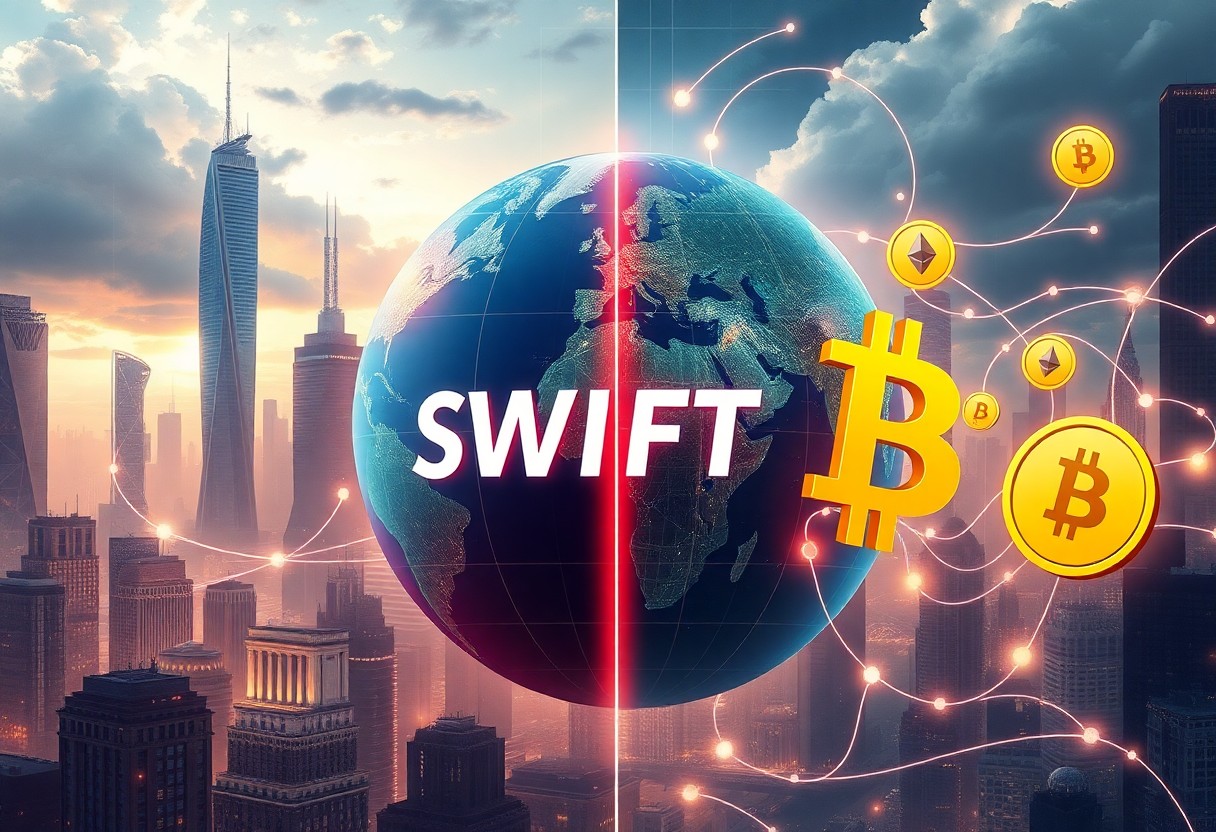Now Reading: Will Layer 2 Solutions Solve Ethereum’s Scalability Problem?
-
01
Will Layer 2 Solutions Solve Ethereum’s Scalability Problem?
Will Layer 2 Solutions Solve Ethereum’s Scalability Problem?

Many of you might be wondering if Layer 2 solutions can truly address Ethereum’s scalability challenges. As the network grapples with high transaction fees and slower speeds, the promise of these innovative technologies appears tempting. However, there are risks and potential downsides associated with implementing these solutions. Could they be a temporary fix instead of a long-term answer? To explore this further, check out this insightful article on Ethereum L2s Are a Bug Masquerading as a Feature.
Key Takeaways:
- Layer 2 Solutions: These are built on top of Ethereum to enhance transaction speeds and reduce fees.
- Scalability Improvement: Layer 2 technologies like Rollups and State Channels significantly boost the network’s capacity.
- Transaction Costs: With Layer 2, users can expect lower transaction fees compared to Layer 1 transactions.
- Interoperability: Many Layer 2 solutions aim to maintain compatibility with existing Ethereum dApps and infrastructure.
- Continued Development: Ongoing advancements in Layer 2 technologies are important for long-term scalability solutions.
Understanding Ethereum’s Scalability Challenges
While Ethereum has become a cornerstone of the blockchain ecosystem, its scalability challenges remain a significant hurdle. The platform’s ability to process a limited number of transactions per second can lead to network congestion, resulting in delays and high gas fees. As your applications grow and demand increases, understanding these scalability issues is imperative for maintaining optimal performance and user experience on the Ethereum network.
Limitations of Layer 1 Solutions
An assessment of Layer 1 solutions reveals that while they aim to enhance Ethereum’s scalability, they often fall short. The core limitations, such as not being able to drastically increase throughput without compromising decentralization or security, impede the ability to serve a larger user base. This means that even with updates like Ethereum 2.0, these solutions alone might not be enough to address the persistent scalability issues you’re facing.
Importance of High Throughput and Low Latency
Behind every successful decentralized application lies the necessity for high throughput and low latency performance. When transactions process swiftly and with minimal delay, your users benefit from a seamless experience that reduces frustration and encourages engagement. However, insufficient throughput can slow down your operations, while high latency can deter new users from adopting your dApps.
In addition to enhancing user satisfaction, high throughput and low latency are vital for ensuring your application can handle increased demand without faltering. When users engage with your dApp, they expect immediate responses and fast transaction times. If your platform cannot meet these expectations, you risk losing users to more efficient competitors. Optimizing for these performance metrics not only strengthens user retention but also positions your application favorably in the ever-evolving blockchain landscape.
Overview of Layer 2 Solutions
There’s a growing need to address Ethereum’s scalability limits, prompting the emergence of Layer 2 solutions. These are protocols built on top of the Ethereum blockchain aimed at increasing transaction throughput and reducing fees, thus enabling smoother user experiences. By handling transactions off the main Ethereum chain while still benefiting from its security, Layer 2 solutions can greatly enhance the network’s capacity without compromising decentralization.
Types of Layer 2 Solutions
There’s a diverse array of Layer 2 solutions that cater to various needs:
- State Channels
- Plasma
- Rollups
- Sidechains
- Nested Blockchains
Knowing these types helps you understand how different approaches aim to tackle Ethereum’s limitations.
| Solution Type | Description |
| State Channels | Off-chain transactions between parties, settled on-chain. |
| Plasma | Child chains that bundle transactions, enhancing scalability. |
| Rollups | Batch multiple transactions into a single one on the main chain. |
| Sidechains | Independent blockchains linked to Ethereum for interoperability. |
| Nested Blockchains | Chains operating within another blockchain, improving efficiency. |
How Layer 2 Works
About Layer 2 solutions utilize various mechanisms to alleviate congestion on the Ethereum network. They enable faster transactions by processing them off the main chain while maintaining a connection to the primary Ethereum ledger. This approach not only decreases transaction costs but also enhances the speed at which transactions can be confirmed.
Indeed, each Layer 2 solution has its unique implementation and benefits. For instance, State Channels allow instant payments and interactions, while Rollups aggregate large volumes of transactions into a single proof for added efficiency. Conversely, challenges such as security risks and complexity must be acknowledged, ensuring that you evaluate the suitability of each solution for your specific needs. Emphasizing scalability and cost-effectiveness, Layer 2 solutions represent innovative steps toward enhancing Ethereum’s overall performance.
Benefits of Layer 2 Solutions
Now, let’s explore the significant advantages that Layer 2 solutions offer for Ethereum users. These solutions not only enhance the network’s overall performance but also pave the way for a more accessible and efficient ecosystem. With improvements in transaction speeds and reduced costs, Layer 2 technologies hold the potential to transform your experience with Ethereum.
Increased Transaction Throughput
Around 65% of Ethereum transactions can be processed more quickly with Layer 2 solutions, significantly boosting the network’s capacity. This increased throughput helps alleviate congestion and ensures that you can complete transactions in a timely manner, even during peak periods.
Cost Efficiency for Users
At a time when transaction fees can skyrocket, Layer 2 solutions present an opportunity for you to save on costs. By enabling off-chain transactions, these solutions reduce the load on the Ethereum blockchain, allowing you to enjoy lower fees while engaging with dApps and services.
Increased cost efficiency further enhances your Ethereum experience by making it more accessible. With reduced fees, you can participate more freely in the ecosystem, whether that’s trading tokens or using decentralized applications. This shift not only lowers your expenses but also encourages wider adoption, benefiting the entire Ethereum community. Moreover, you can expect increased stability and reliability, ensuring that your transactions are executed smoothly without the burden of excessive costs.
Current Layer 2 Implementations
Many developers are exploring Layer 2 solutions to enhance Ethereum’s scalability. Among the various implementations, several have gained prominence, including Optimistic Rollups and zk-Rollups. These solutions aim to process transactions off the main Ethereum chain, thereby relieving congestion and reducing fees while maintaining network security. As you dive deeper into these technologies, you’ll find that they each have unique characteristics and benefits.
Optimistic Rollups
Rollups are a Layer 2 scaling solution that executes transactions outside Ethereum’s main chain but posts their transaction data back to it. Optimistic Rollups assume that transactions are valid by default, only performing fraud proofs when a transaction is contested. This design allows for increased throughput and reduced latency, enabling you to enjoy faster confirmations and lower fees for your transactions.
zk-Rollups
Layer 2 solutions such as zk-Rollups utilize zero-knowledge proofs to enhance scalability on Ethereum. This method allows the system to verify transactions without disclosing all the underlying data, significantly increasing efficiency while ensuring privacy. You can benefit from low fees and high throughput as zk-Rollups bundle multiple transactions, sending only a proof back to the main chain.
A key advantage of zk-Rollups is their inherent security features, since they provide proof of validity, meaning only legitimate transactions get processed. Additionally, they can offer greater confidentiality as personal information is not exposed in the transaction process. However, one should be cautious as they require strong cryptographic knowledge and complexity, which can sometimes lead to scalability challenges. With the right understanding and development, zk-Rollups hold immense potential to scale Ethereum efficiently.
Challenges Facing Layer 2 Solutions
All Layer 2 solutions for Ethereum come with their unique array of challenges that could hinder their effectiveness in enhancing scalability. Issues such as interoperability with Layer 1, varying degrees of decentralization, and different user experiences can create friction. Moreover, these solutions must navigate the complexities of maintaining the underlying security of the Ethereum network while still providing faster transaction speeds and lower fees. Understanding these challenges is crucial for assessing the viability of Layer 2 technologies.
Security Concerns
One of the prominent challenges you may encounter with Layer 2 solutions is security. As these solutions operate on top of the Ethereum blockchain, they introduce potential vulnerabilities that could be exploited. You need to ensure that your assets remain safe while enjoying the benefits of higher throughput and efficiency. Attacks on Layer 2 protocols may undermine the security of the entire ecosystem if not addressed properly, making it a significant concern for developers and users alike.
User Adoption and Integration
Solutions to user adoption and integration represent another hurdle for Layer 2 solutions. While these technologies promise faster transactions and lower costs, integrating them into existing workflows can be complex. You may find that users are hesitant to switch from familiar Layer 1 processes to Layer 2 systems, especially if they lack technical knowledge. Building user-friendly interfaces and comprehensive educational resources will be crucial for encouraging widespread adoption.
Consequently, addressing user adoption and integration becomes vital for the success of Layer 2 solutions. It’s important for developers to focus on creating intuitive interfaces and improving user education to make these technologies accessible to everyone. You should be aware of the potential barriers to entry that clients may face, and actively work towards minimizing these obstacles. By fostering a welcoming environment for new users and offering seamless transitions from Layer 1 to Layer 2, you can help cultivate a community eager to embrace the future of blockchain scalability.
Future Prospects for Layer 2 on Ethereum
Not only do Layer 2 solutions have the potential to drastically improve Ethereum’s scalability, but they might also redefine how you interact with the blockchain. Innovations like optimistic rollups and zk-rollups are gaining traction, as discussed in Etheruem Layer 2s: Solving Scalability, But Can They Thrive?. As these technologies evolve, they promise a future where transactions are faster and cheaper, inviting more users into the Ethereum ecosystem.
Potential Developments
At present, the landscape of Layer 2 solutions is rapidly evolving, with several projects developing new methods to enhance scalability. You can expect further advancements in interoperability, making it easier for users to switch between Layer 1 and Layer 2 seamlessly. Continuous upgrades are likely to streamline user experiences and expand use cases for decentralized applications.
Comparison with Layer 1 Upgrades
After examining the potential of Layer 2 solutions, it’s important to compare them with Layer 1 upgrades, as both aim to enhance Ethereum’s performance. Below is a summary of their respective benefits:
| Layer 1 Upgrades | Layer 2 Solutions |
| Improved on-chain scalability | Off-chain transactions reduce congestion |
| Requires network-wide consensus | More flexible with varying consensus mechanisms |
| Longer roadmap for implementation | Quicker deployment of solutions |
With Layer 1 upgrades focusing on foundational changes, they often face extended development timelines and network-wide consensus challenges. Meanwhile, Layer 2 solutions can bring immediate benefits by significantly reducing transaction fees and increasing throughput without needing to alter the core Ethereum protocol extensively. It’s imperative for you to stay informed about these developments to understand how they might impact your experience on the Ethereum network.
| Layer 1 Upgrades | Layer 2 Solutions |
| Stronger security model | Potential for varied security standards |
| Slower but more systematic progress | Faster adoption with risks involved |
| Robust network resilience | Higher flexibility with trade-offs |
Understanding these dynamics is key for you as a participant in Ethereum’s vibrant ecosystem, where both Layer 1 and Layer 2 solutions will play a vital role in shaping the future of decentralized finance.
To wrap up
Drawing together the insights on Layer 2 solutions, it’s clear that these innovations offer promising enhancements to Ethereum’s scalability challenges. By utilizing off-chain processing, you can benefit from faster transactions and lower fees, which can significantly improve your experience on the network. While these solutions are not without their own complexities, they are a vital step towards a more scalable Ethereum. As you navigate the evolving landscape of blockchain technology, keeping an eye on Layer 2 developments will be vital for maximizing your interaction with Ethereum’s ecosystem.
FAQ
Q: What are Layer 2 solutions, and how do they work?
A: Layer 2 solutions are protocols built on top of the Ethereum blockchain that enhance its transaction speed and reduce costs. They operate by processing transactions off the main Ethereum chain (Layer 1) and then periodically submitting checkpoints or summaries back to the main chain. This approach alleviates congestion on the Ethereum network, allowing for a higher volume of transactions to be handled in a shorter timeframe.
Q: Will Layer 2 solutions completely eliminate Ethereum’s scalability issues?
A: While Layer 2 solutions significantly improve scalability by increasing transaction throughput, they may not fully eliminate all scalability issues. Factors such as the inherent limitations of the Ethereum protocol, the design of different Layer 2 solutions, and market demand can still lead to sporadic congestion. However, they serve as an effective enhancement to alleviate many current challenges.
Q: What types of Layer 2 solutions are available for Ethereum?
A: There are several types of Layer 2 solutions available for Ethereum, including state channels, sidechains, and rollups. State channels allow participants to conduct many off-chain transactions, with final results recorded on the Ethereum blockchain. Sidechains operate independently but are linked to the main chain. Rollups, which can be either optimistic or zero-knowledge, bundle multiple transactions into a single one, decreasing the data load on the main chain.
Q: How do Layer 2 solutions impact transaction fees on Ethereum?
A: Layer 2 solutions can significantly lower transaction fees on Ethereum by processing transactions off-chain, which reduces congestion on the main network. Since fewer transactions are being processed on-chain, the overall demand for block space decreases, leading to much lower gas fees. This makes microtransactions and small-scale applications more viable on the Ethereum network.
Q: What are the potential downsides or limitations of using Layer 2 solutions?
A: While Layer 2 solutions have significant benefits, they also come with certain limitations. These include the need for additional infrastructure, potential risks associated with the security of off-chain transactions, and interoperability challenges between different Layer 2 solutions. Furthermore, users might face trade-offs between decentralization and efficiency depending on the chosen Layer 2 solution.























